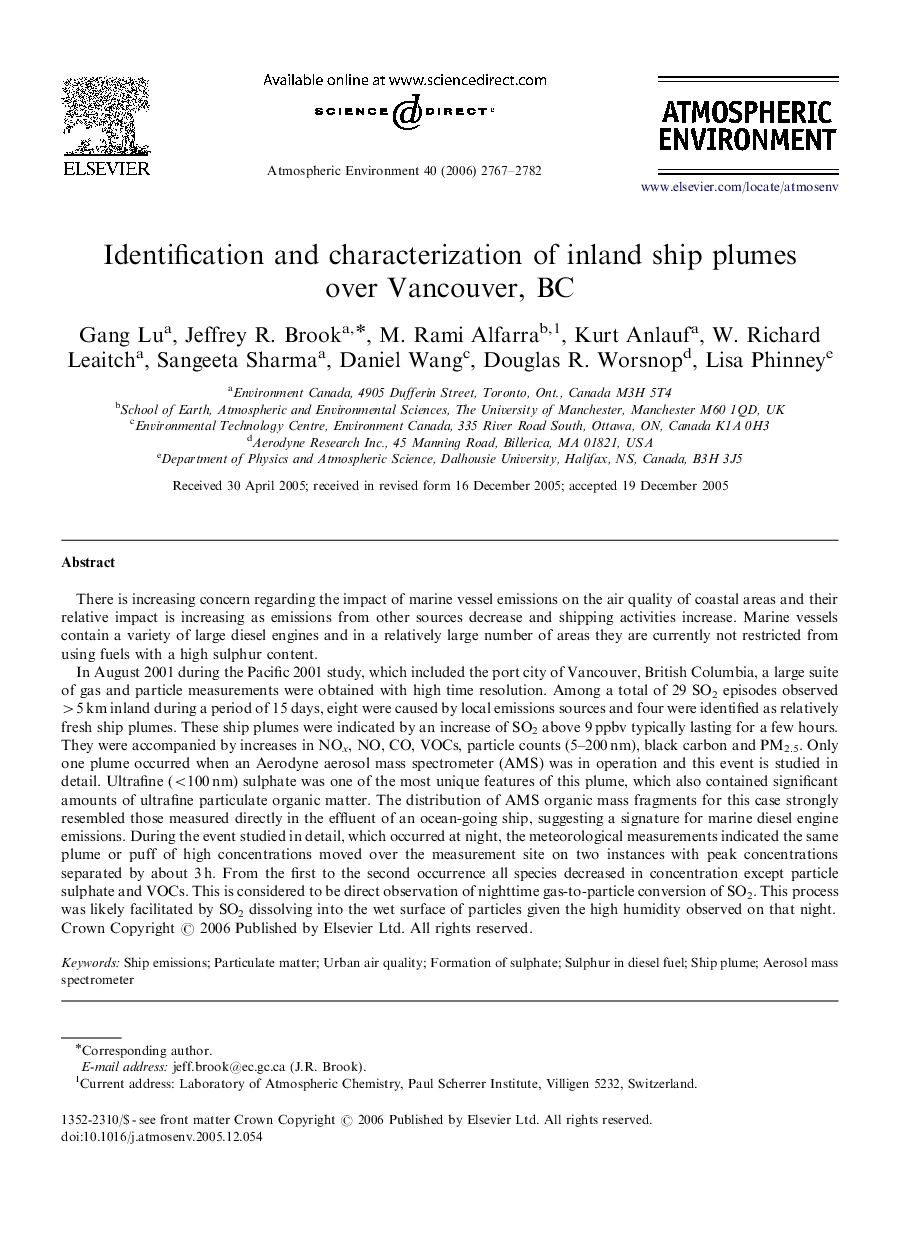| کد مقاله | کد نشریه | سال انتشار | مقاله انگلیسی | نسخه تمام متن |
|---|---|---|---|---|
| 4444952 | 1311262 | 2006 | 16 صفحه PDF | دانلود رایگان |

There is increasing concern regarding the impact of marine vessel emissions on the air quality of coastal areas and their relative impact is increasing as emissions from other sources decrease and shipping activities increase. Marine vessels contain a variety of large diesel engines and in a relatively large number of areas they are currently not restricted from using fuels with a high sulphur content.In August 2001 during the Pacific 2001 study, which included the port city of Vancouver, British Columbia, a large suite of gas and particle measurements were obtained with high time resolution. Among a total of 29 SO2 episodes observed >5 km inland during a period of 15 days, eight were caused by local emissions sources and four were identified as relatively fresh ship plumes. These ship plumes were indicated by an increase of SO2 above 9 ppbv typically lasting for a few hours. They were accompanied by increases in NOx, NO, CO, VOCs, particle counts (5–200 nm), black carbon and PM2.5. Only one plume occurred when an Aerodyne aerosol mass spectrometer (AMS) was in operation and this event is studied in detail. Ultrafine (<100 nm) sulphate was one of the most unique features of this plume, which also contained significant amounts of ultrafine particulate organic matter. The distribution of AMS organic mass fragments for this case strongly resembled those measured directly in the effluent of an ocean-going ship, suggesting a signature for marine diesel engine emissions. During the event studied in detail, which occurred at night, the meteorological measurements indicated the same plume or puff of high concentrations moved over the measurement site on two instances with peak concentrations separated by about 3 h. From the first to the second occurrence all species decreased in concentration except particle sulphate and VOCs. This is considered to be direct observation of nighttime gas-to-particle conversion of SO2. This process was likely facilitated by SO2 dissolving into the wet surface of particles given the high humidity observed on that night.
Journal: Atmospheric Environment - Volume 40, Issue 15, May 2006, Pages 2767–2782